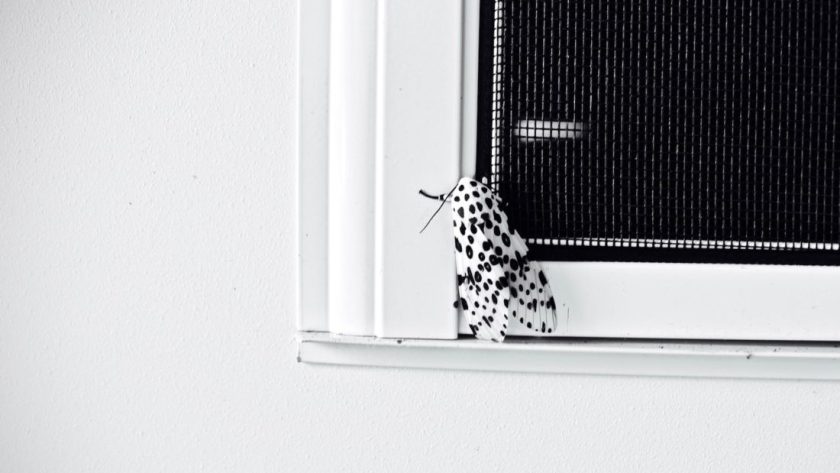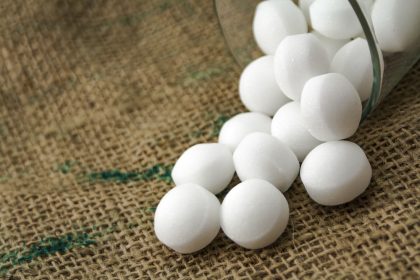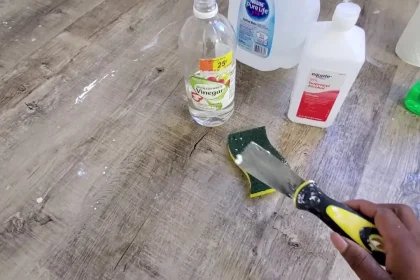Have you ever entered a room only to be surprised by a moth flying past your face? If not, you may have encountered moths in another way. Like finding the holes, they chewed into your favourite sweater stored safely in the back of your closet.
Though moths may look small and inconspicuous, they can completely take over your pantry or wardrobe. Therefore, you must act quickly to protect your precious belongings.
The secret to defeating these flying insects is understanding when they are most active and how to get the house ready for their peak season. Here is all you need to know.
Recognising Moth Season
Like many pests, moths also have their most active time of the year. Generally speaking, the warmer months between late spring and early autumn are considered the moth season.
The rising temperatures bring these winged insects out of their cocoons. They immediately feast on fabrics, dry cooking products, and various organic materials.
Why, though, does the moth season coincide with more agreeable weather? As they are cold-blooded, these insects need more moderate temperatures to thrive.
Their relatively short life cycle coincides with the gradual rise in temperature. In turn, this significantly improves their chances of successful reproduction and feeding.
Pantry and clothes moths are the prime examples of the species. They have great reproductive abilities and can produce astounding offspring numbers in just a short period.
That being said, it is important to note that moth’s activity can last year-round. It increases significantly with central heating systems keeping indoor spaces warm and cosy during the winter months.
Common Moths to Look out for
You have to know the types of moths you are dealing with to protect your house effectively. Below are the two most common species that cause the greatest trouble in households.
Clothes Moths
A cloth moth is, without a doubt, the biggest nightmare for clothes lovers around the world. While the adults are just annoying, it is the larvae that cause the real damage.
The seemingly harmless white worms consume pretty much all types of natural fabrics, including wool, silk, and even leather.
If your favourite Christmas sweater or inherited precious carpet has mysteriously developed tiny holes, clothing moth larvae are most likely the culprits.
Pantry Moths
Unlike clothes moths, pantry moths get the nutrition they need from food products.
These bothersome insects will lay their eggs in your kitchen cabinets and contaminate your dry cooking ingredients.
Once the larvae hatch, they start feasting on cereal, rice, flour, and similar items. They never actually stop eating until they grow into fully developed adults!
Though they have different feeding habits, both moth species will cause irreparable damage to your belongings, not to mention the dreadful mess they will leave behind.
Getting Your House Ready
With just a few simple steps, you can prepare your home for the moth’s active season and save yourself the trouble of having to deal with a serious infestation down the road.
Routinely Deep Clean Your House
Those flying troublemakers thrive in quiet and dark places where they can remain undisturbed.
So your pantry and the back of your wardrobe are ideal spots for them. Piles of old linens you keep and haven’t looked into for years are also deal homes for them.
Frequent vacuuming and cleaning, however, will disturb their life cycles, effectively eliminating them before they can reproduce. When doing so, make sure you get to those often-forgotten areas deep into the cabinets and wardrobe, where moth larvae are most likely to hide.
You also need to clean all drawers, shelving, and furniture regularly where garments are usually kept.
Sort your belongings and lay them out in the sun for a couple of hours before reorganising them. This extra precautionary step will increase your chances of deterring those winged insects, as they detest light.
Regarding food moths, you must always keep your kitchen cabinets and cupboards spotless. After wiping down the shelves, be sure to let them fully dry and air out. Then, start placing your jars and packaged food products back inside.
Do not forget to go over the corners and any hard-to-reach areas at the bottom of the cabinets.
Employ Moth Deterrents
For years, mothballs have been the preferred deterrent for these destructive pests. However, many people find the mothballs’ pungent odour unpleasant. Fortunately, there are lots of alternatives to try that smell better.
Cedarwood, for example, is one of the most common natural repellents. Hanging cedar blocks in your closet or stuffing them into drawers will help guard the contents from clothing moths.
Lavender sachets are another fragrant option that drives the winged insects away while deodorising your clothes at the same time. Both cedarwood and lavender are safe to use around humans and pets.
Bay leaves have a similar effect, as well. Placing just a few in different spots in your cabinets or containers will help keep the pests away.
To discourage the pantry moths from getting into your stored goods, keep your dry cooking supplies in airtight containers. Also, make sure to close each one fully after use. This will help keep various food items fresh for much longer.
Check and Fix
You must inspect closely your pantry and closet for evidence of moth activity, especially during their peak season. Look for little larvae, silk webbing, or holes in clothes and food packages. If you find any, act immediately before the infestation spreads.
Additionally, check for any small cracks or openings in your walls, windows, or doors. Be sure to seal off any weak points to block all entries to your home.
When dealing with pantry moths, you will need to clear your shelves completely and throw away any infested products. As for clothes moths, all affected garments should either be frozen or washed in boiling water to kill the larvae.
In either case, you must thoroughly clean all areas before returning the remaining moth-free items to their original places.
Effective Moth Extermination Strategies
Sometimes, those stubborn pests would still find their way into your house and set up nicely despite all of your hard efforts.
In this case, moth extermination is the only solution. The following are the most effective strategies to consider.
Chemical Pesticides
Chemical solutions can be required for more extreme infestations. However, it is best to leave this task to a professional pest control company to avoid exposing yourself or your loved ones to dangerous toxins.
Moth extermination specialists have the necessary equipment and knowledge to eradicate both adult moths and larvae once and for all. The treatments can be used on carpets, clothes, and different sections of the house.
Pheromone Traps
If you prefer a non-toxic approach, pheromone traps are a rather effective option to consider. These devices have an adhesive surface and they attract moths to it by emitting an irresistible smell. To catch any wandering flying insects, place these in your drawers and cabinets.
Heat Treatments Versus Freezing
One of the most successful DIY techniques that works great on clothes moths is freezing. If you find the larvae in your closet, place the affected items in a sealed plastic bag and store that bag in the freezer for a few days.
The cold will kill the eggs and larvae, sparing your favourite, handmade knitwear any further damage. This technique can work for bagged flour, rice and similar types of food too.
Though saved for serious infestations, heat treatments are also a practical solution. Professional exterminators use special equipment to expose garments and infected furniture to extreme heat. This should kill both adult moths and their larvae.
Conclusion
After dealing with those bothersome pests, keep using our tips and suggestions to maintain a moth-free home all year round.
If you reside in an older property or a region prone to infestations, hiring expert moth control services for routine inspections is a smart move.
All in all, preventive actions, periodic maintenance, and efficient pest-control methods are the three things that will keep your home safe.




